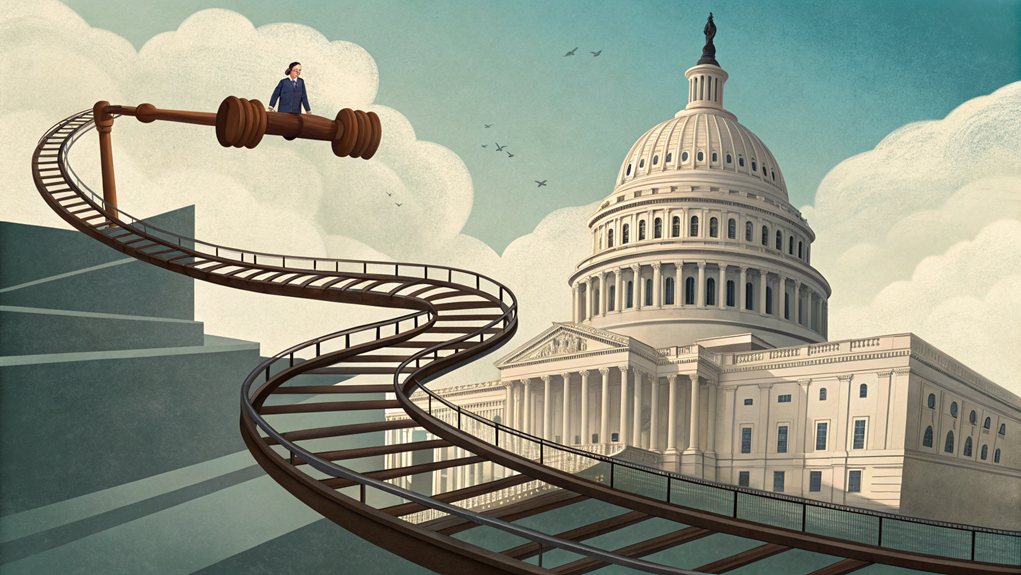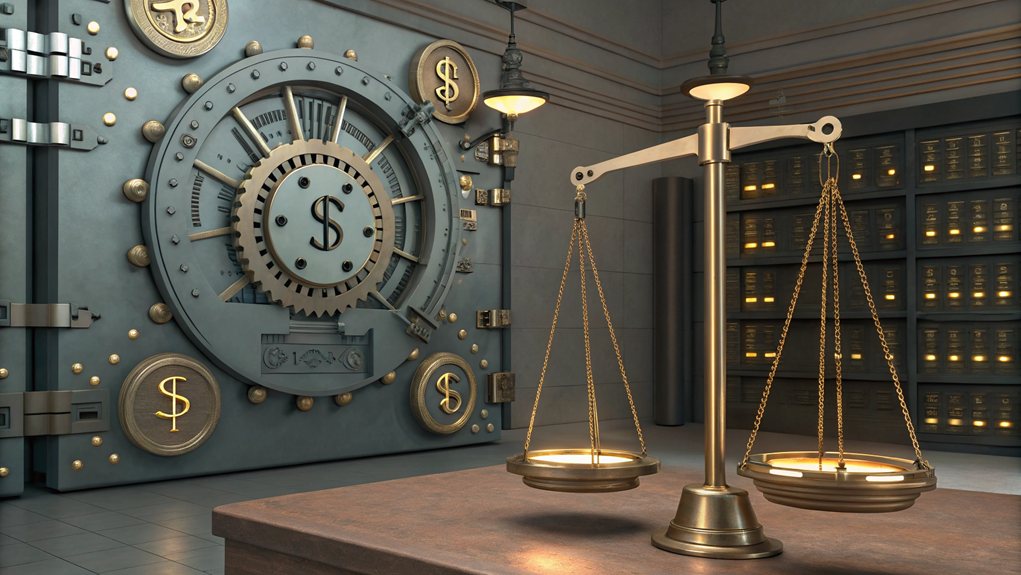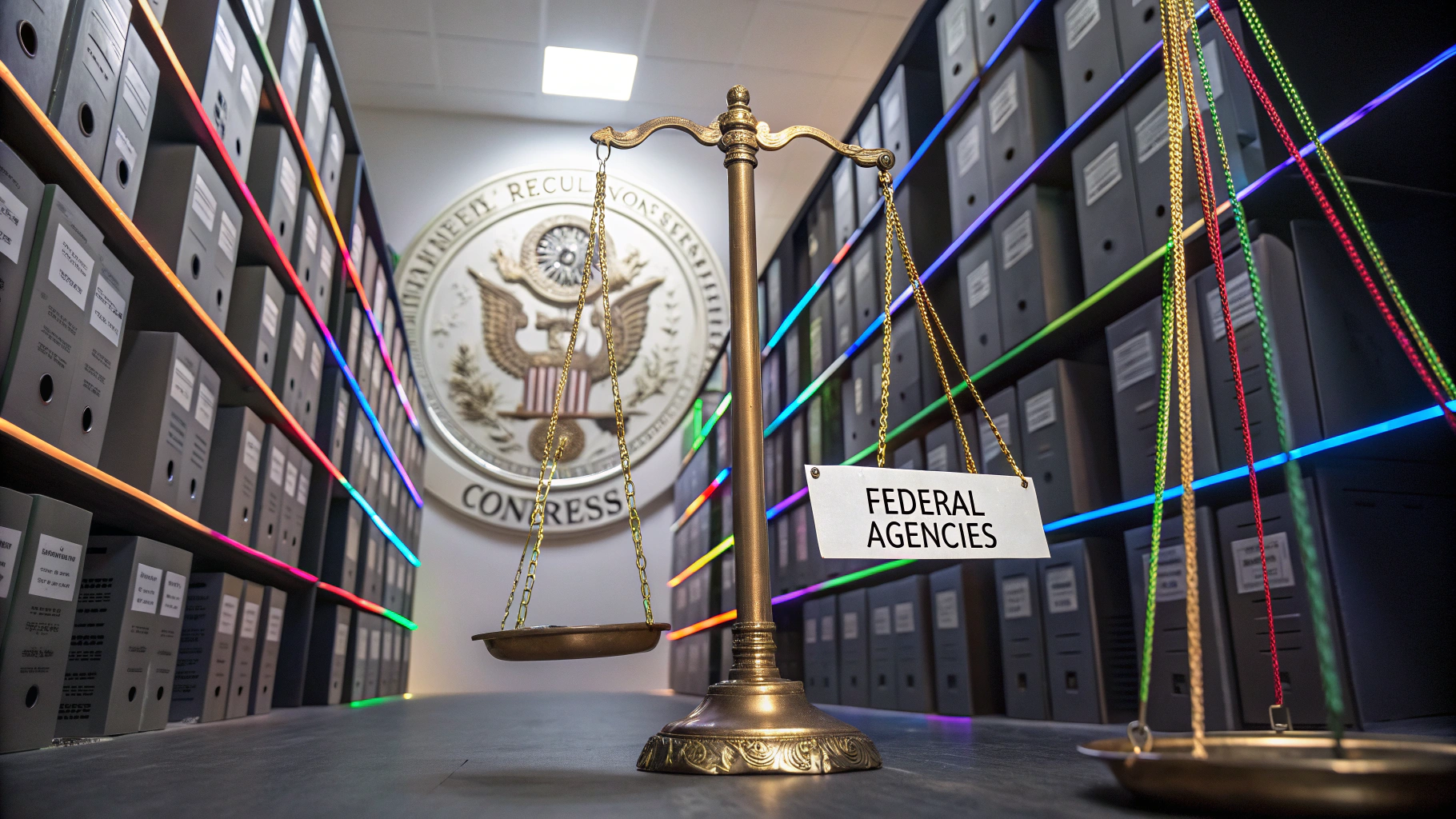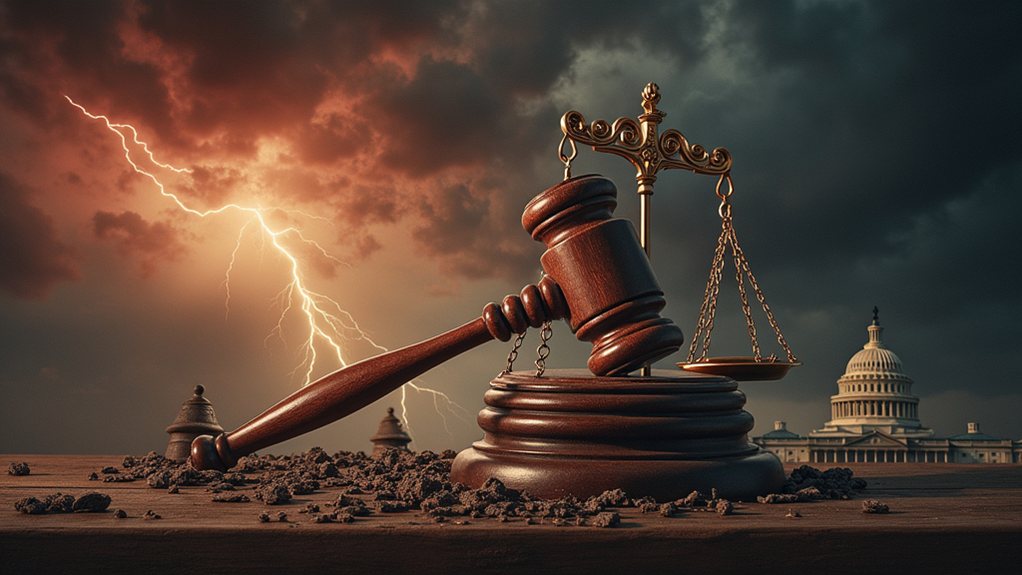The confirmation process for federal appointees is nothing short of a wild ride. Picture a tango between presidential hopes and Senate skepticism. It starts with nominee vetting, including financial disclosures and FBI background checks. Then, nominees face rigorous Senate committee hearings that feel like a public grilling. After that, it's onto full Senate debates, where filibusters can spice things up. Only a simple majority gets them across the finish line. Buckle up for more chaos ahead!

When it comes to filling important government positions, the confirmation process is like a rollercoaster ride—thrilling, nerve-wracking, and full of unexpected twists. It's a dance between the president's wishes and the Senate's scrutiny. The Constitution demands that the Senate gives its "advice and consent" for major appointments. So, buckle up! This process is critical, a necessary hurdle to guarantee that nominees are not just political puppets but qualified individuals ready to take on serious responsibilities. The Senate's pivotal role in this process underscores the importance of checks and balances in the U.S. government system.
The journey begins in the White House, where potential appointees are carefully selected and vetted. They must complete an array of forms, from financial disclosures to security questionnaires. Yes, the FBI gets involved, digging deep into backgrounds to guarantee no skeletons are lurking. Meanwhile, the Office of Government Ethics is busy making sure there are no conflicts of interest. Sounds fun, right? Additionally, nominees face rigorous FBI background checks to ensure their qualifications and integrity are thoroughly assessed.
Next, nominations are sent to relevant Senate committees, which take their sweet time reviewing everything. Hearings ensue, and it's like a public interrogation. Senators grill nominees about their qualifications and policy views. Sometimes, outside witnesses are brought in to spice things up, either supporting or tearing down the nominee. It's a real spectacle, showcasing the nominees' ability to handle pressure. Most nominees face scrutiny during this process, but a majority are ultimately confirmed.
If the committee gives a thumbs-up, the nomination heads to the full Senate. Here's where the real drama unfolds. Senators debate, argue, and sometimes resort to filibustering. A simple majority is all it takes to confirm, with the vice president ready to save the day if there's a tie.
Once confirmed, the Senate notifies the White House to prepare the presidential commission. With a flourish, the president signs it, and voilà! The Great Seal of the United States is affixed, and the appointee can finally take their place in the government. The rollercoaster ride ends, but the real work is just getting started.
Frequently Asked Questions
What Is the Typical Duration of the Confirmation Process?
The typical duration of the confirmation process? Well, it varies wildly.
Under Biden, it takes about 191 days—121 in committee, 70 on the Senate floor. Trump's nominees? A leisurely 160.5 days.
Cloture votes and partisan drama? They love to drag things out. Historical records show that George H.W. Bush's nominees got through way faster.
Can a Nominee Withdraw From the Confirmation Process?
Sure, a nominee can totally withdraw from the confirmation process. It happens more often than you'd think.
Why? Sometimes, it's tax issues or conflicts of interest. Other times, it's just political drama.
They might get cold feet, or maybe they just can't handle the waiting game. It's like being on a bad date—awkward and uncomfortable.
Do All Federal Appointees Require Senate Confirmation?
Not all federal appointees need Senate confirmation. About a quarter of those appointed by the president face the Senate's grilling.
Cabinet members? Yes. Ambassadors? Definitely.
But, many positions slide through without a Senate stamp of approval. It's like a VIP club. Some get in, some don't.
What Happens if a Nominee Is Rejected?
If a nominee gets rejected, it's not just a slap on the wrist.
The position stays empty, like a chair at a party no one wants to sit in. The president has to pick someone new—back to square one, folks!
It's a political mess, reflecting doubts about the nominee or the administration's choices.
And let's face it, rejection can be a PR nightmare. Just ask any president who's been there. Ouch!
How Can the Public Influence the Confirmation Process?
Public influence on the confirmation process? Oh, it's a mixed bag.
Sure, folks can shout on social media, and sometimes senators actually listen. Public hearings? They're a show, but at least people can see the nominees squirm.
Petitions? Cute, but do they really matter? Interest groups lobby like it's a sport.
In the end, it's all about who screams the loudest, while transparency remains a distant dream.
Welcome to modern democracy!








